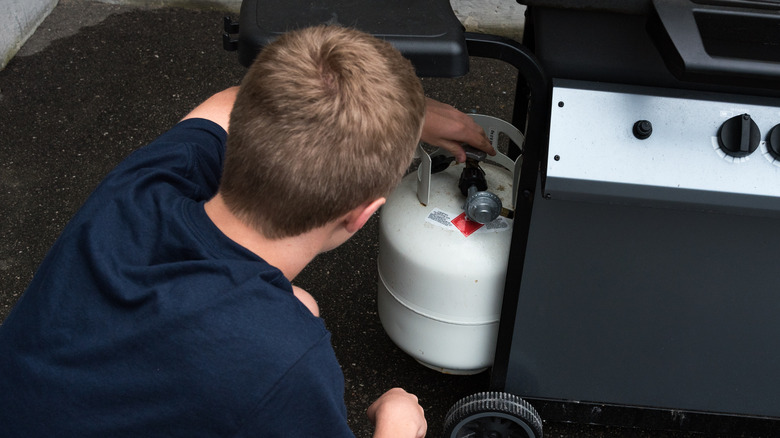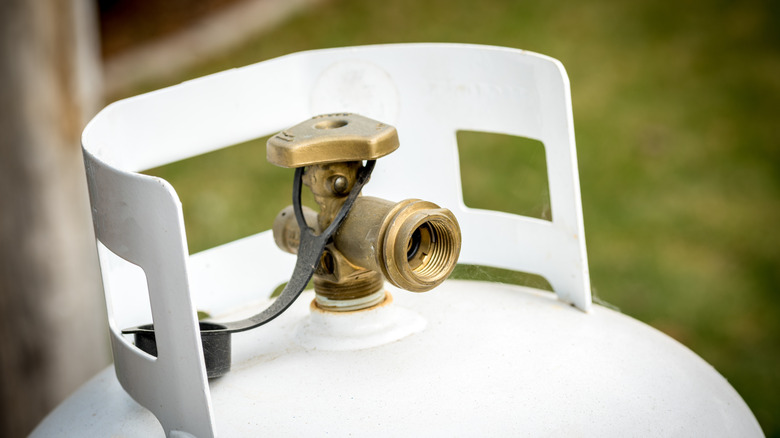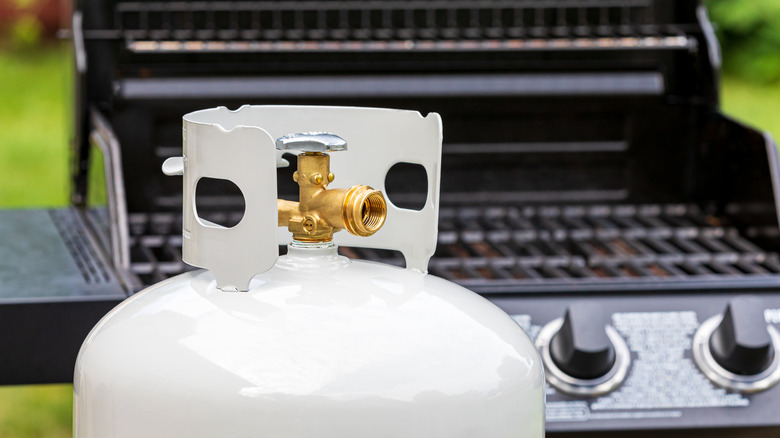All You Should Know About The Lifespan Of Your Propane Tank
When summer comes around and you're ready to fire up your gas grill for the season, you may not give much thought to turning on the propane tank, lighting the burners, and perfecting that juicy, medium-rare steak. However, if the last time you used your grill was several months ago, you may want to be certain that your equipment is still safe to use. Start by checking the integrity of the propane tank, which does have a limited lifespan of 12 years from its original manufacturing date.
So how do you know the date the manufacturer made the tank? It has an expiration date stamped or engraved on it that tells you when it's time to stop using it and find a new one. Some tanks have a shorter lifespan than 12 years because they have gone through a requalification process, which means a qualified manufacturer or a repair center checks the tank to ensure that it's safe to continue using, performing any necessary fixes. The requalification happens at the time of the original expiration date.
People who are focused more on the here and now might think of the lifespan of a propane tank in terms of how many more hours of grilling they can receive before needing to refill it. This is an important consideration as well, because you don't want to run out of fuel while grilling. We'll explain how to determine both of these lifespans.
Understanding the expiration date
For someone using a gas grill, a 20-pound propane tank is the most common way to supply fuel. It consists of thick metal, which keeps the gas inside at a high level of pressure. The top section has a metal collar that includes a hole for your hand, so you can carry the heavy tank comfortably.
The collar serves another purpose that's related to the tank's lifespan, though: providing the codes stamped or engraved on it. The upper row of characters lists the manufacturer of the tank, as well as its service pressure. The middle row includes the serial number for the unit and — importantly for this discussion — the original manufacturing date. This date appears in a month-year format, such as "07 20" for July 2020. You can use the manufacturing date to figure out when the tank will reach the end of its initial 12-year lifespan, which in this case would be July 2032. If your tank is past the expiration date, propane companies won't continue to fill it until it goes through recertification. After recertification, the tank receives a new expiration date — usually five to seven years from the recertification. The company doing the recertification stamps on the new date.
It's worth noting that if you use a propane exchange program, you shouldn't have to worry about the expiration date, because the company doing the exchange will remove expired units from service.
Determining how much gas is left in your propane tank
If you're more concerned with ensuring you have enough gas inside the tank to grill food for tonight's meal without running out halfway through, determining the amount of gas remaining is possible without a gauge.
You can start by weighing it. When empty, it weighs about 17 pounds. When full, it has about 20 pounds of propane, giving it a total weight of about 37 pounds. Weigh the tank, subtract the 17-pound cylindrical shell, and you have an idea of how much gas remains available. Now you can roughly calculate how many grilling hours you'll get from the propane tank with the remaining gas. You can expect to use 1 to 2 pounds of gas per hour of grilling time, depending on the intensity of heat you want.
For another means of determining how full your propane tank is, you can try a popular hack. Fill a mug with hot water, then pour the water over the top of the tank. Move your hand up and down across the surface, feeling for the spot where it shifts from feeling warm to feeling cold. The propane inside is extremely cold, so the hot water you poured over the top will not affect the temperature in any area of the tank where propane exists. Now you can estimate how much of the cylinder still contains propane.


